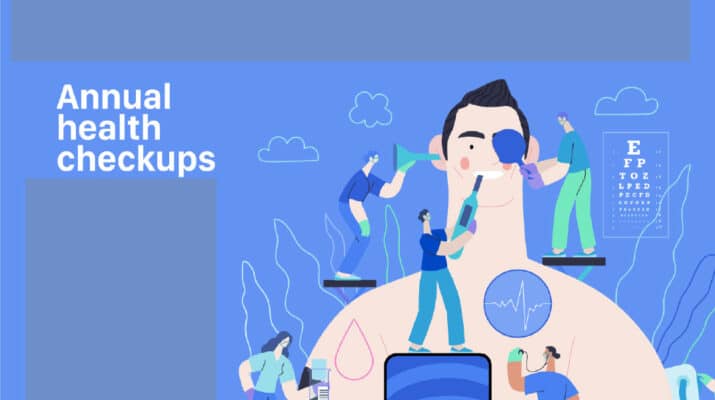Univera physician: ‘Going to your doctor visit is such a big part of your health maintenance and prevention’
By Jane Schmitt

If you are in good health and thinking about skipping your annual doctor’s visit, think again.
A yearly physical exam is important for so many reasons, according to physician Lorna Fitzpatrick, vice president of medical affairs and senior medical director at Univera Healthcare.
“The heart and soul of medicine is prevention, and we all want to be as active as we can about that,” she said. “Going to your doctor visit is such a big part of your health maintenance and prevention.”
Here, Fitzpatrick talks about why she rarely misses a routine checkup and how that makes sense for so many others, as well.
Establish a baseline with your healthcare provider
A well visit can help build a trusted relationship with your doctor and enables him or her to understand your unique needs. It also provides a record of baseline functions including heart rate, cholesterol level and blood pressure. Maintaining a dialogue with someone who knows your medical history is a smart move for people of all ages. Your doctor will encourage lifestyle changes to improve your health and prevent illness.
“I go every year,” Fitzpatrick said. “I am fortunate not to have any issues, but it’s a good time to check in and make sure everything is still working. I want to hear it from my doctor.”
Spot potential problems
These visits are valuable not only to assess your overall health but to update vaccinations and review medication. But another big part is a medical screening to check for disease. Indeed, a test or scan might detect an issue even if the person isn’t experiencing any symptoms.
“We are very in tune with our own bodies and think we know everything. But so many things in the body are silent. You just never know,” Fitzpatrick said.
A prime example is high blood pressure.
“We call it the silent killer,” she said. “Some people don’t have any signs or symptoms. They might be walking around with high blood pressure right now and not even know it. But if you don’t go to your doctor and get it checked, we won’t be able to start treating it and prevent longer-term outcomes like kidney damage or stroke.”
Other common tests recommended by doctors include colonoscopy, mammogram, cholesterol check and urinalysis.
“The reason for an annual physical is to prevent problems or catch problems early in the disease process. So screening is huge. If you can’t prevent illness, you want to catch it as soon as possible so that you can mitigate the outcome,” Fitzpatrick said.
Insurance requirements for medical screenings
Insurers may require patients to have an annual exam before covering certain procedures and potentially lifesaving screenings such as mammogram or colonoscopy.
“Those screenings stem from getting in for that doctor visit,” Fitzpatrick said. “Once you have those done, it may remind you to get other things taken care of,” such as bloodwork, a specialist visit or prescriptions to be filled.
The holistic approach
Modern health care is multi-dimensional and holistically emphasizes a patient’s physical and mental health.
“Preventative visits don’t just address physical health. It’s so much more now,” Fitzpatrick said. “How are you (handling) stress? How are things overall in your life right now? We want you to talk to your doctor. That’s why we run late on appointments sometimes; it’s because we had a long conversation with someone about what’s going on in their life.”
Your health can change in a year
Don’t underestimate how much your life and health could change in a single year.
“Annual visits to the doctor do matter,” she said. “A year can make a big difference. You can go from having low blood pressure to high in a short amount of time. Other things can come up, like a breast lump you didn’t feel but that your doctor feels.”
Another condition that could be detected is prediabetes. Indeed, the Centers for Disease Control and Prevention reports that approximately 96 million U.S. adults (more than one in three) have prediabetes and don’t know it. The condition puts them at increased risk to develop Type 2 diabetes, heart disease and stroke. Lifestyle changes made now may prevent or delay more serious health problems.
“Maybe your weight creeped up one year from the next,” Fitzpatrick said. “There are changes you can make in your diet to prevent that. ‘Hey, maybe I should be walking a bit every day.’ Losing just 5% of your body weight can have a significant impact on blood pressure, diabetes and other outcomes. We encourage patients to come in and have a conversation with their doctor.”

